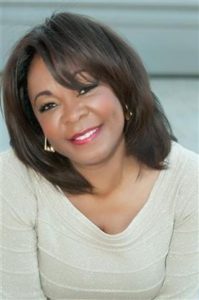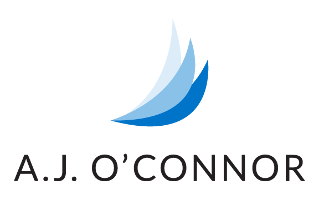
Coach’s Corner: Q&A with Carol Kelly
 In this month’s Coach’s Corner blog, we are delighted to feature Carol Kelly, an accomplished executive coach and strategic consultant, whose expertise is in preparing executives to be ‘high-impact, transformative’ leaders, especially those facing complex change and transition issues.
In this month’s Coach’s Corner blog, we are delighted to feature Carol Kelly, an accomplished executive coach and strategic consultant, whose expertise is in preparing executives to be ‘high-impact, transformative’ leaders, especially those facing complex change and transition issues.
Recognized as a holistic thinker, Carol views people and organizations as “human systems” and helps her clients to consciously ‘occupy their space’ within the organization to perform at epic levels and achieve bigger and better results. We invite you to enjoy her valuable responses to our questions.
AJO: What’s a workplace trend that you think needs to change?
Carol Kelly: A workplace trend that I believe must be looked at harder is how organizations deal with change. Change is a constant in today’s organizations, and how companies react and adapt to change is critical to their resilience. Whether it be the introduction of a new product, the application of new processes or overarching transformations such as mergers or workforce reductions, change is part of business.
It’s true that organizations have matured in their way of addressing their change landscapes, but they still need to find a better balance between change management and change leadership. There is a difference. Change management aims to harness change, get it under control and outline the tactical steps to evolve. Change leadership aims to create a sense of urgency and influence people to take action. It prepares people to respond with openness, agility, and resilience. Change management is reactive; change leadership is proactive. Change management focuses on skill; change leadership focuses on mindset.
In times of change, the most effective leaders have the soft skills to teach the mindset that gets people ready for change. They are able to help employees negotiate company shifts with greater certainty. There are three key traits effective change leaders need to have:
- Visionary communicator. Leaders that effectively communicate their vision, proactively, will help their teams better understand and align to a common goal. This vision can provide the clarity employees crave so that they can better assimilate when change comes. Knowing there is a clear direction and mission behind change makes it easier to accept.
- Challenge the status quo. Changing the way things have always been done can create resistance. It can also be inspiring. Leaders that support stepping outside the box and being innovative can create teams that are more adaptable, engaged and productive. Change leaders that encourage innovative thinking create workplaces that are more resilient to change.
- Cultivate a change mindset. Change leaders are experts at modeling behaviors that embody a spirit for change. They make change energizing and rewarding and encourage active participation in shaping the changing organizational landscape.
AJO: What’s one thing that can make or break a workplace culture?
Carol Kelly: There is a lot of talk these days about Diversity, Equity and Inclusion (DEI). While diversity and equity are both critical to a vibrant workplace culture, I believe it’s the inclusion piece of the equation that has become the most critical.
When it comes to DEI, I liken it to various aspects of attending a party: Diversity is being invited to the party, Inclusion means you get to contribute to the playlist, Equity means that you have access to the dance floor, to experience the music. While all three components are critically important, Inclusion is central. Without it, employees can feel left out, overlooked and undervalued because their ideas and contributions are either not sought out or heard. For example, you might be invited to a meeting because they need female representation, but when you speak your input is overlooked.
We all know that culture is a strong organizational force. In many ways it will outweigh corporate strategy every time when it comes to how well a company can thrive. Often culture can come down to the employees’ social and emotional wellbeing – areas that have been particularly strained throughout the recent pandemic. Employees want to be appreciated, heard, seen and know they have equal access to opportunities.
This focus on inclusivity is more vital than ever. The hybrid workplace is making it more challenging. As such, every company needs to double down on ways to show employees they are valued, appreciated, recognized and heard. One way companies can implement this is by having an internal ombudsperson who functions as a confidante and an advocate for employees. This person’s role is to ensure that inclusion is pervasive and persistent.
AJO: What’s your favorite part of partnering with other businesses?
Carol Kelly: By partnering with other businesses, I find that I have the chance to reach those I wouldn’t have been able to connect with on my own. I get an opportunity to learn and engage with a very diverse group of business leaders where I am fortunate to be able to help them unleash natural talents and expose latent ones. It’s an energizing and fulfilling mission.
Often, in my coaching engagements, I find leaders that are stuck without a way to move forward. In these cases, I see myself as a catalyst for their growth by helping them in four dimensions: personally, interpersonally, managerially and organizationally. Usually the engagements end with such outcomes as: promotions; greater visibility and exposure; and increased career opportunities.
AJO: What’s been one of your favorite success stories from your time with AJO?
Carol Kelly: My favorite success story involved an AJO client who is a C-suite executive at a large healthcare organization. She was in the midst of receiving personal threats and egregious letters that were precipitated by internal, hostile informants. This was making her work life extremely stressful.
I worked with her offsite for six months to help her reflect and grow at each of the four dimensions I mentioned before – personally, interpersonally, managerially, and organizationally. Through our work, she ‘stayed the course’ while navigating through extreme politics and adversarial conditions. As a result, she achieved her goals and received accolades and respect from key senior leaders and influencers in the organization. Currently, she is successful and thriving in her role.
AJO: What’s one of your top coaching tips?
Carol Kelly: FOCUS. This is a coaching strategy I used with the client referenced above. Be mindful of where you focus. Whatever you focus on grows. It’s easy, and dangerous, to focus on your circle of concern, or areas where you have no control. Instead, focus on your circle of influence, or where you have some influence and control. Being laser-focused in the right direction is like using emotional blinders enabling you to avoid distractions. This is a very powerful strategy.
I also like to use anchoring techniques to help leaders achieve their goals. By having a specific reference point (which can be as simple as a pen you hold or the chair you sit in), gives leaders a valuable yet private reminder of how to stay focused, grounded, and execute with power.
AJO: What’s one piece of advice you wish you’d gotten as a young professional?
Carol Kelly: Don’t go it alone. It is so very valuable to engage a mentor and to build partnerships. There’s power in numbers and by aligning with other experts you can build a collective consciousness to achieve so much more than you may have on your own. Finding other professionals that have shared values and purpose can be exceptionally rewarding and valuable for your own evolution.

